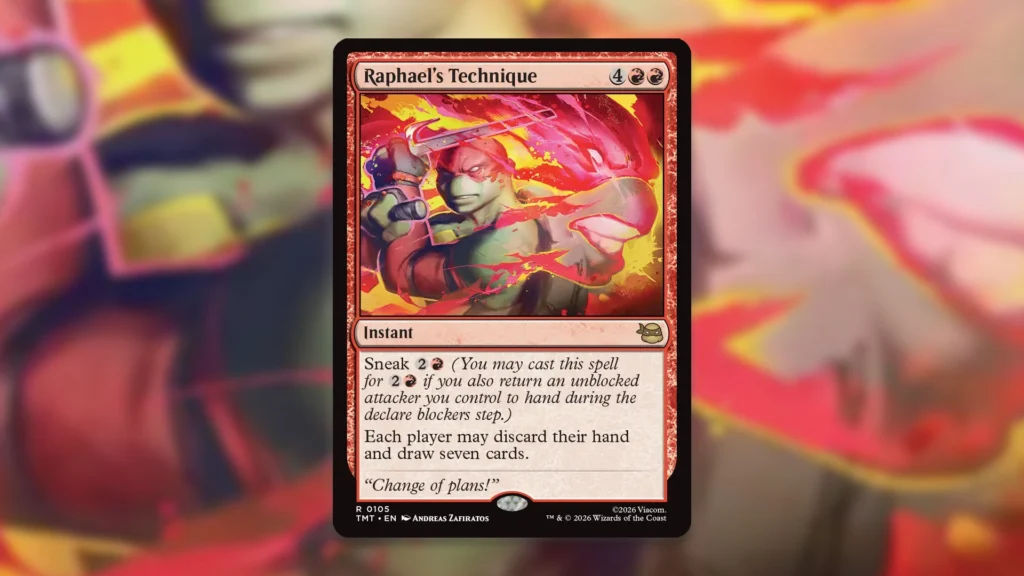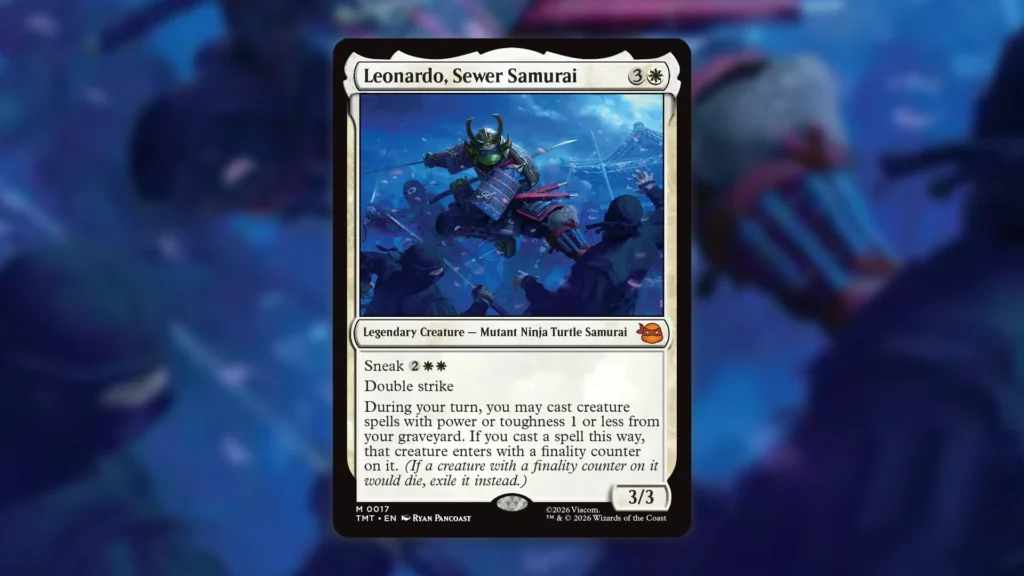Today at New York Comic Con, a bunch of new information and spoilers for the upcoming Teenage Mutant Ninja Turtles Universes Beyond set were revealed. While we had evidence that Teenage Mutant Ninja Turtles would indeed be the unknown crossover of 2026, it has now been made official.
Among the handful of main set spoilers showcased, we also got a glimpse at a sweet new mechanic from the set. If you’re a fan of Ninja strategies, this mechanic may feel a bit familiar.
Sneak Mechanic

Sneak is extremely reminiscent of Ninjutsu. Just like Ninjutsu cards, cards with Sneak can be hard cast like normal. However, they also offer a separate casting method.
Instead of paying a card’s original mana cost, you may cast cards with Sneak by paying the Sneak cost and returning an unblocked attacker you control to your hand during the declare blockers step. As such, there are a few key differences between Sneak and Ninjutsu that are worth mentioning.
First and foremost, when you utilize a card’s Sneak ability, you’re still casting the card in question. You aren’t just putting the card directly into play tapped and attacking. This is important, as it enables the mechanic to appear on non-permanent spells, such as Raphael’s Technique shown above. In the case of Raphael’s Technique, assuming you can utilize the Sneak mechanic, you can cast the card at a big discount.
This doesn’t mean that creatures can’t use the Sneak mechanic. In fact, Leonardo, Sewer Samurai, which we will discuss in more detail in the next section, is a creature that features the new mechanic. Notably, MTG head designer Mark Rosewater just confirmed that when you cast a creature using its Sneak cost, it does still enter tapped and attacking. This way, you can Sneak in a large creature and get extra damage across.
Another difference is the timing restriction associated with Sneak. Because you have to cast Sneak spells in the declare blockers step, the unblocked creature you return to your hand will not have dealt combat damage to the opponent yet. This timing restriction prevents you from returning unblocked creatures in the combat damage step, which was technically possible with Ninjutsu cards.
Evaluating Raphael’s Technique
Now that we’ve discussed how the Sneak mechanic works, it’s time to take a look at the two Sneak spoilers revealed thus far and their applications.
Raphael’s Technique is a bit of a strange card. The fact that your opponents aren’t forced to discard their hands and draw seven cards makes the card a lot less appealing compared to Wheel of Fortune-style effects. This means that if you have a card draw punisher out, such as Narset, Parter of Veils or Nekusar, the Mindrazer, your EDH opponents can just choose to keep the cards in their hand while you get seven fresh ones.
The Sneak ability does make the effect much cheaper, but it also has anti-synergy with the card’s text box. Once you return the creature to your hand, if you want seven new cards, that creature gets discarded in the process. Your best bet to maximize Raphael’s Technique is likely to still play it in Commander alongside other card draw punishers, since you can benefit from drawing seven new cards, and your opponents won’t have the luxury of refueling their hands if they’re low on cards.
Evaluating Leonardo, Sewer Samurai

Leonardo, Sewer Samurai is undoubtedly powerful. Its Sneak cost is more restrictive than its normal casting cost. However, as a 3/3 with Double Strike, you may be able to enable a bigger attack than your opponent was expecting.
Still, most of Leonardo’s appeal comes from its final ability. Being able to recast creatures from your graveyard is awesome. They do enter with Finality counters, so you can’t just keep sacrificing and recasting them, but in an aristocrats shell, untapping with Leonardo and casting a bunch of small creatures from your graveyard in one turn will pull you super far ahead. Expect this card to have serious Commander appeal.
Ways to Abuse the Sneak Mechanic
With more Sneak spoilers inevitably on the horizon, it’s worth going over different ways to abuse the mechanic at a baseline. Just like with Ninjutsu creatures, it’s often best to pair Sneak cards with cheap, evasive creatures. In Standard, there’s a reason why Kaito, Bane of Nightmares commonly shows up alongside Spyglass Siren and Cecil, Dark Knight, which come down early and aren’t the easiest to block.
Sneak cards also pair nicely with creatures with strong enters or leaves-the-battlefield triggers. That way, you’re able to generate extra value by casting those cards, returning them to your hand, and recasting them.
Opening up this type of mechanic to all spell types is a game changer. We look forward to seeing all the other Sneak cards and payoffs that get revealed in the coming months.
Stick with us here at dev.mtgrocks.com: the best site for Magic: The Gathering coverage!
